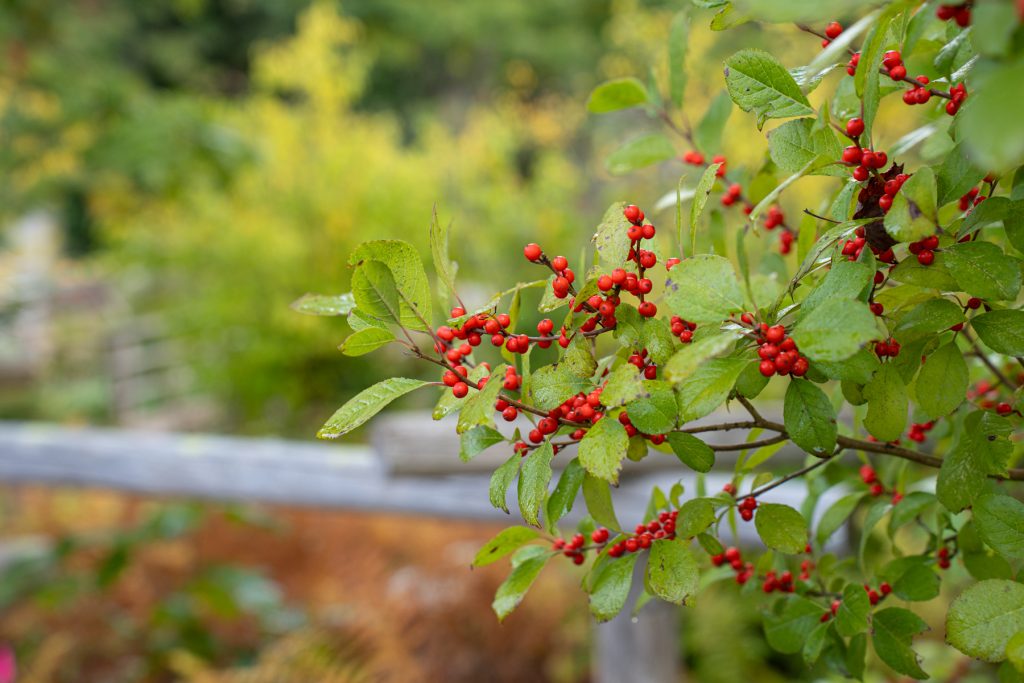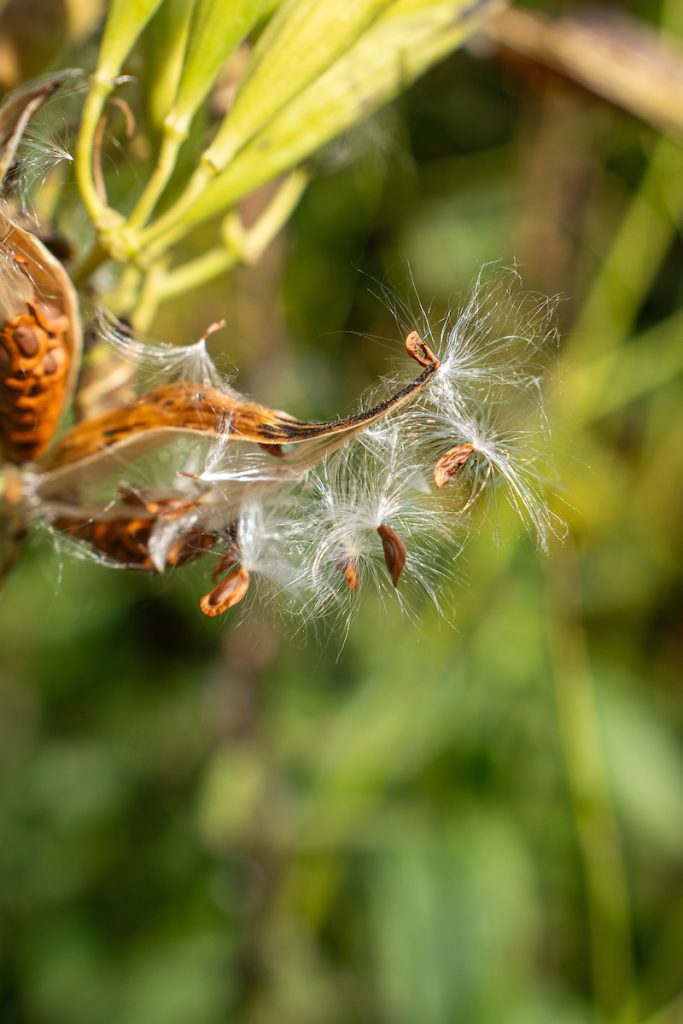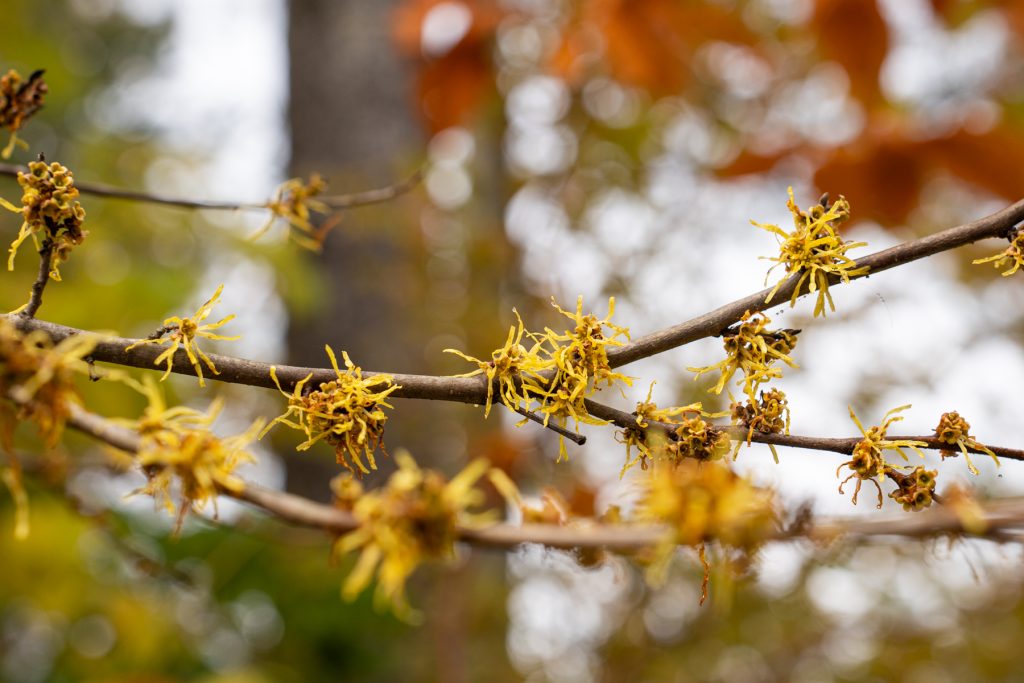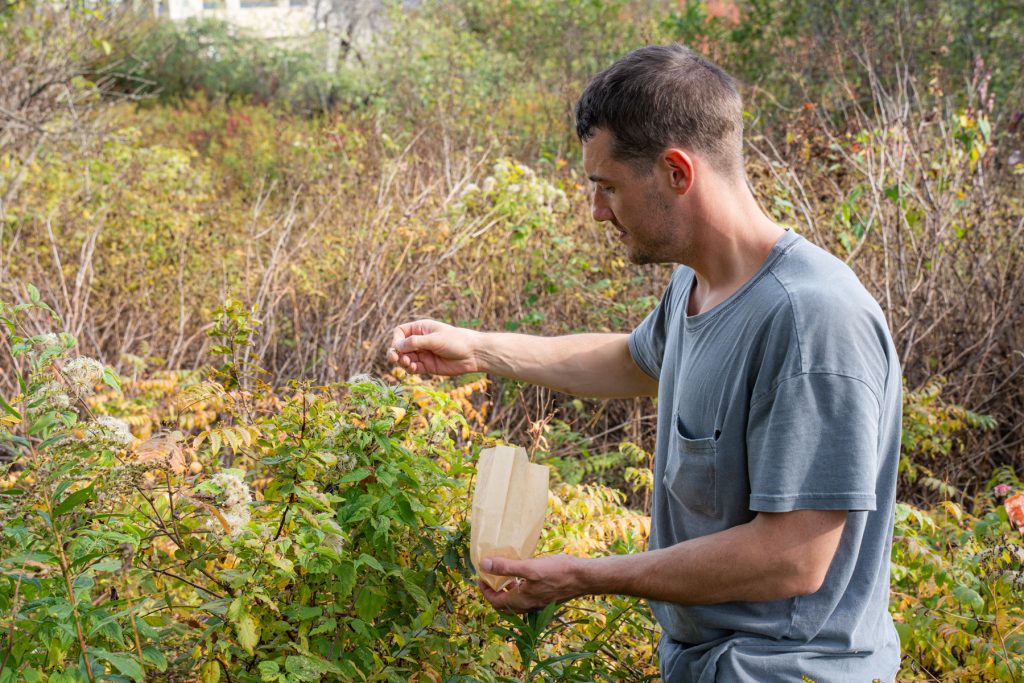You may be familiar with dandelion tufts floating in the breeze or burs sticking to your shoes. These are two ways plants “disperse” or spread their seeds. Plants use a wide range of living (biotic) and non-living (abiotic) factors to help spread seed and populate new areas. Keep reading to discover the fascinating variety of ways plants disperse seed!
Using Animals and Insects
Many plant species depend on animals to distribute seed. Seeds, or fruits containing seeds, either attach to an animal’s body or a human’s clothes (“epizoochory”), or are eaten (“endozoochory”). Nodding beggars-ticks (Bidens cernua) is a Maine-native plant commonly found on wetland edges. Its seeds have sharp pointed hairs with barbs that catch easily on passing animals and humans!
Large animals are not the only ones that disperse seed! Some plants, including many early-fruiting wildflowers found in our Maine forests, use ants to disperse their seed (“myrmecochory”). One of these species is wild ginger (Asarum canadense). Wild ginger possesses a packet of fleshy tissue rich in fatty acids attached to its seeds coat. This structure is called an elaiosome—combining the ancient Greek words “élaion” meaning oil and “sóma” meaning body. This packet of nutrition entices woodland ants to collect wild ginger seed and transport it back into their nest. They consume the nutrient-rich elaiosome, and discard the remaining seed at their nest intact. The seeds then experience a safe and rich site for germination and growth. This plant-ant mutualism has evolved independently many times within different plant groups!

Using Gravity
Gravity dispersal (“barochory”) occurs when a fruit grows heavy enough to drop to the ground when ripe. This is commonly paired with a secondary type of dispersal. For example, apples (Malus domestica) drop from the tree when ripe, but the seeds are also transported when animals ingest the fruit and move on. Coconuts (Cocos nucifera) also use gravity dispersal and may combine that with water dispersal (“hydrochory”) in coastal areas. The ripe coconut falls from the tree into water and floats on the water until reaching soil.

Using Wind
Perhaps the most well-known way seeds disperse is by wind (“anemochory”). Many plants in the aster (Asteraceae) family, like dandelions (Taraxacum sp.) use wind dispersal. These plants typically have a fluffy structure (“pappus”) attached to the fruit, which acts like a parachute and floats on wind currents! This dispersal type can effectively spread seed far distances. In Maine, one of our most rare plants, the New England blazing star (Liatris novae-angliae) uses wind dispersal. The New England blazing star has a small pappus that catches the wind and distributes seed to new locations. However, structures used for wind dispersal take many forms! Maples (Acer sp.), elms (Ulmus sp.), and lindens (Tilia sp.) all use samaras, a type of fruit with flat wings, to float through the air.
Using Pressure
Perhaps most dramatic is ballistic dispersal (“ballochory”), where a buildup of pressure or tension within the fruit causes seed to forcibly explode away from the plant. Typically, cells of the fruit fill with water causing pressure to build on the seed until the seed explodes out of the fruit! Spotted jewelweed (Impatiens capensis), which is commonly found in wet Maine woodlands and across North America, disperses seed ballistically. If you hear a soft popping sound walking through the woods in late summer, take a close look for spotted jewelweed plants!

Seed dispersal is fundamental to how plant species move and become established in new areas over time. Successful dispersal – in all its various forms – is critically important for plants’ continued success and survival. That is why plant migration and range shifts are a key focus of our plant conservation work at the Gardens.


